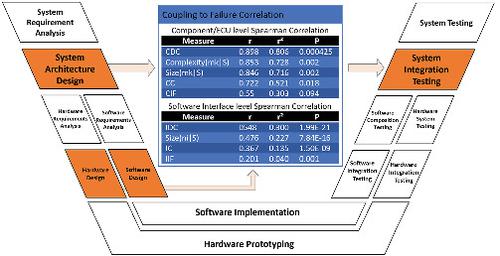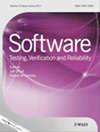Towards using coupling measures to guide black‐box integration testing in component‐based systems
IF 1.2
4区 计算机科学
Q3 COMPUTER SCIENCE, SOFTWARE ENGINEERING
引用次数: 1
Abstract
In component‐based software development, integration testing is a crucial step in verifying the composite behaviour of a system. However, very few formally or empirically validated approaches are available for systematically testing if components have been successfully integrated. In practice, integration testing of component‐based systems is usually performed in a time‐ and resource‐limited context, which further increases the demand for effective test selection strategies. In this work, we therefore analyse the relationship between different component and interface coupling measures found in literature and the distribution of failures found during integration testing of an automotive system. By investigating the correlation for each measure at two architectural levels, we discuss its usefulness to guide integration testing at the software component level as well as for the hardware component level where coupling is measured among multiple electronic control units (ECUs) of a vehicle. Our results indicate that there is a positive correlation between coupling measures and failure‐proneness at both architectural level for all tested measures. However, at the hardware component level, all measures achieved a significantly higher correlation when compared to the software‐level correlation. Consequently, we conclude that prioritizing testing of highly coupled components and interfaces is a valid approach for systematic integration testing, as coupling proved to be a valid indicator for failure‐proneness.

在基于组件的系统中使用耦合度量来指导黑盒集成测试
在基于组件的软件开发中,集成测试是验证系统组合行为的关键步骤。然而,很少有正式的或经验验证的方法可用于系统测试,如果组件已经成功地集成。在实践中,基于组件的系统的集成测试通常是在时间和资源有限的情况下进行的,这进一步增加了对有效测试选择策略的需求。因此,在这项工作中,我们分析了文献中发现的不同组件和接口耦合措施之间的关系以及在汽车系统集成测试期间发现的故障分布。通过研究两个体系结构级别上每个度量的相关性,我们讨论了它对指导软件组件级别以及硬件组件级别的集成测试的有用性,其中在车辆的多个电子控制单元(ecu)之间测量耦合。我们的结果表明,在所有测试措施的架构级别上,耦合措施和失效倾向性之间存在正相关。然而,在硬件组件级别,与软件级别的相关性相比,所有的度量都获得了显著更高的相关性。因此,我们得出结论,优先测试高度耦合的组件和接口是系统集成测试的有效方法,因为耦合被证明是故障倾向的有效指标。
本文章由计算机程序翻译,如有差异,请以英文原文为准。
求助全文
约1分钟内获得全文
求助全文
来源期刊

Software Testing Verification & Reliability
工程技术-计算机:软件工程
CiteScore
3.70
自引率
0.00%
发文量
34
审稿时长
>12 weeks
期刊介绍:
The journal is the premier outlet for research results on the subjects of testing, verification and reliability. Readers will find useful research on issues pertaining to building better software and evaluating it.
The journal is unique in its emphasis on theoretical foundations and applications to real-world software development. The balance of theory, empirical work, and practical applications provide readers with better techniques for testing, verifying and improving the reliability of software.
The journal targets researchers, practitioners, educators and students that have a vested interest in results generated by high-quality testing, verification and reliability modeling and evaluation of software. Topics of special interest include, but are not limited to:
-New criteria for software testing and verification
-Application of existing software testing and verification techniques to new types of software, including web applications, web services, embedded software, aspect-oriented software, and software architectures
-Model based testing
-Formal verification techniques such as model-checking
-Comparison of testing and verification techniques
-Measurement of and metrics for testing, verification and reliability
-Industrial experience with cutting edge techniques
-Descriptions and evaluations of commercial and open-source software testing tools
-Reliability modeling, measurement and application
-Testing and verification of software security
-Automated test data generation
-Process issues and methods
-Non-functional testing
 求助内容:
求助内容: 应助结果提醒方式:
应助结果提醒方式:


